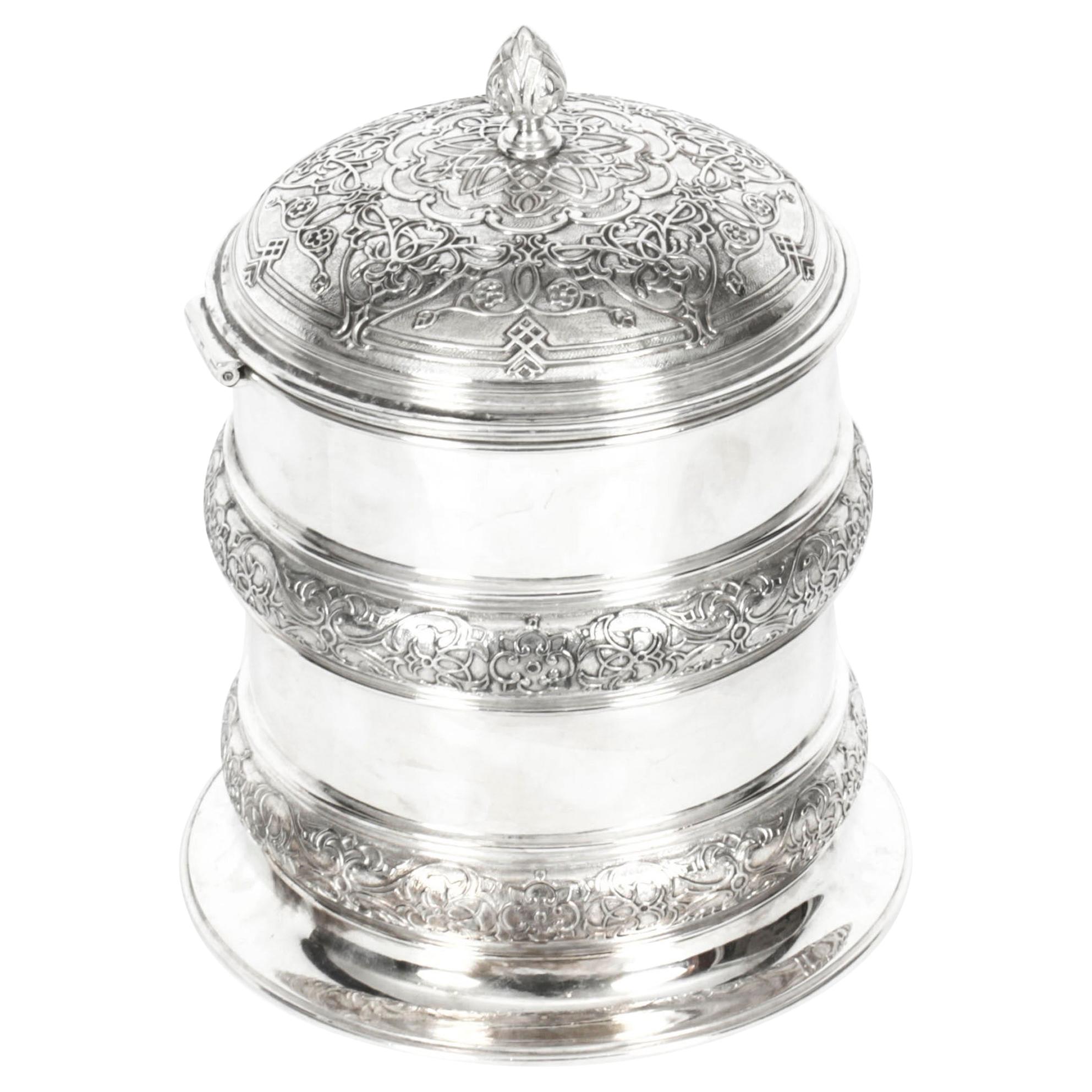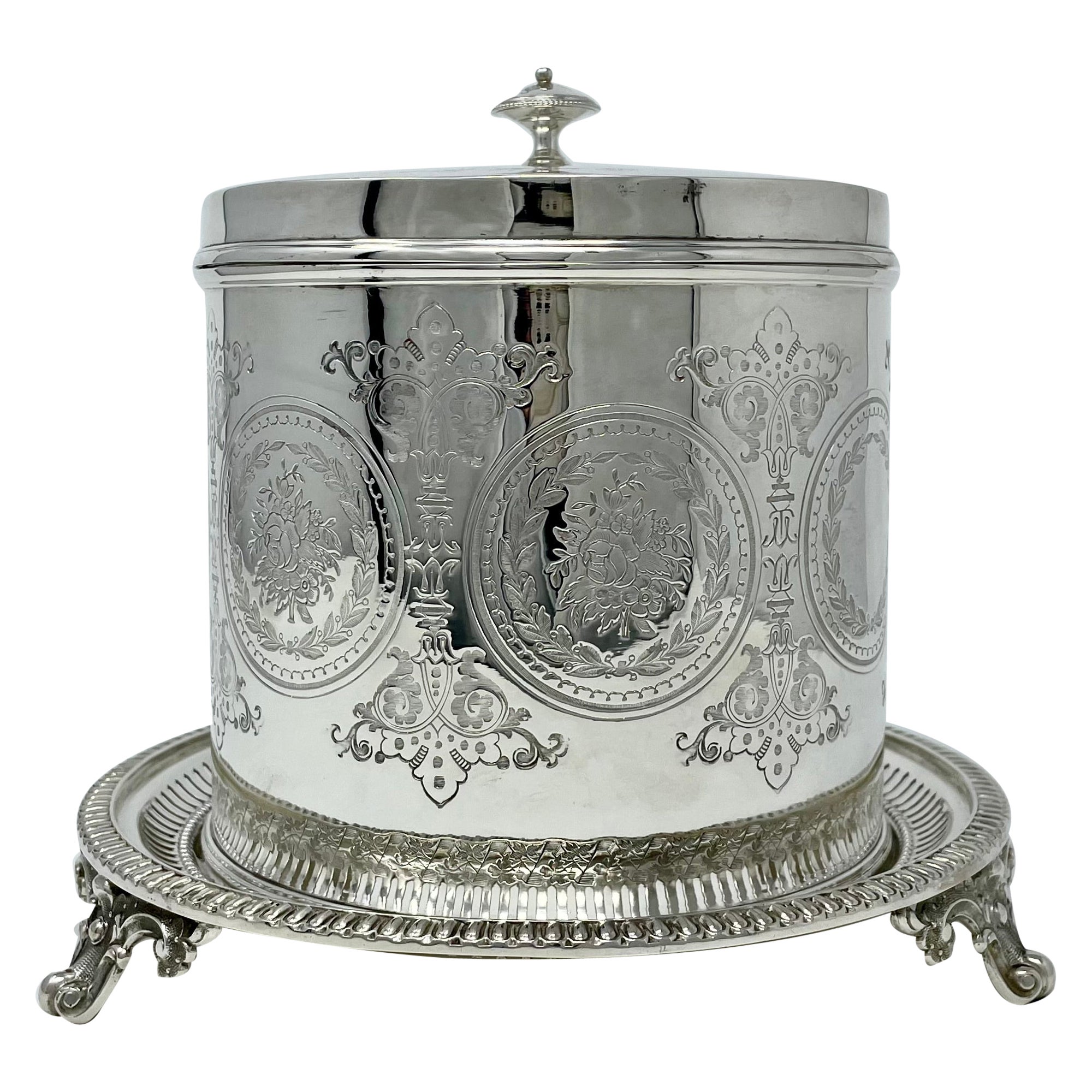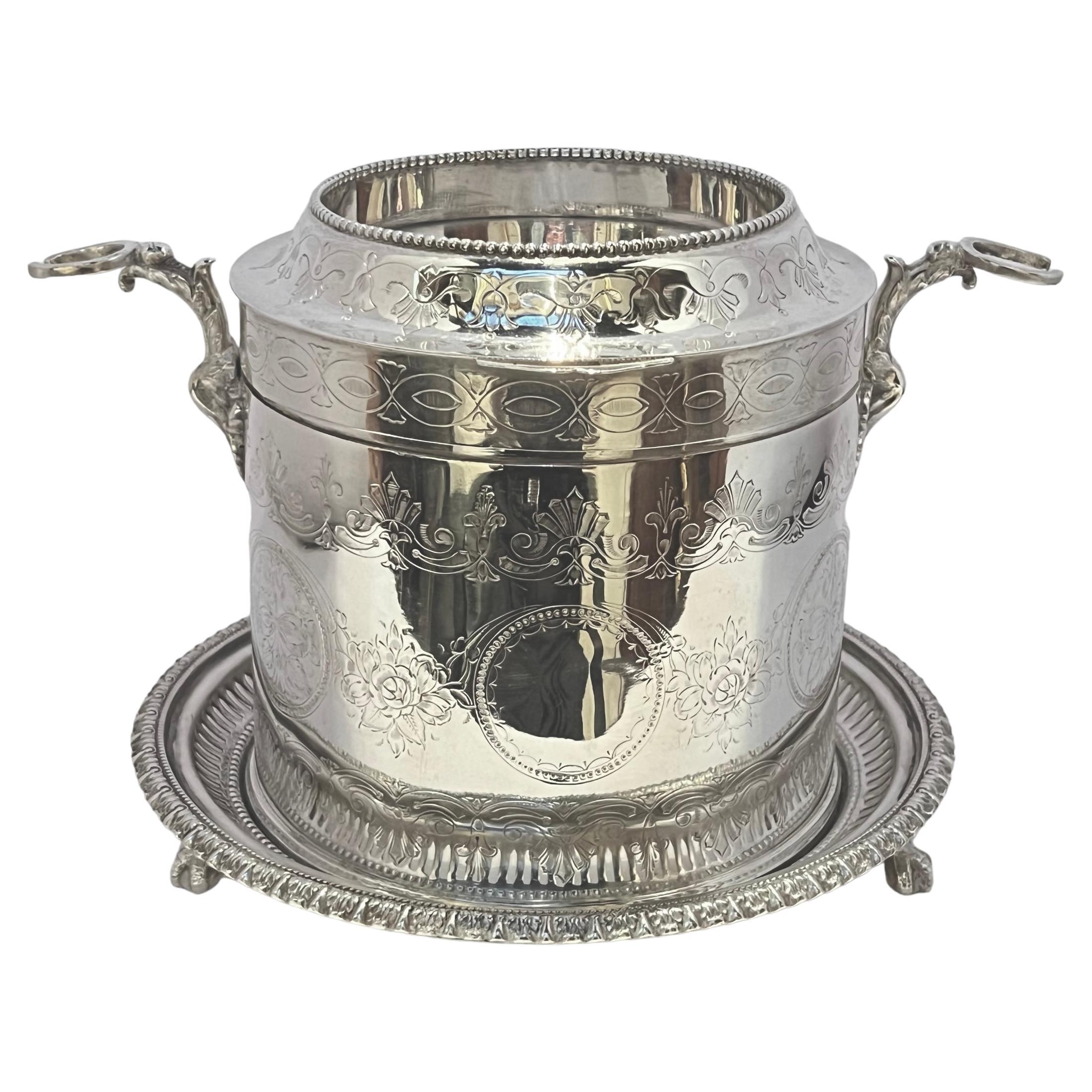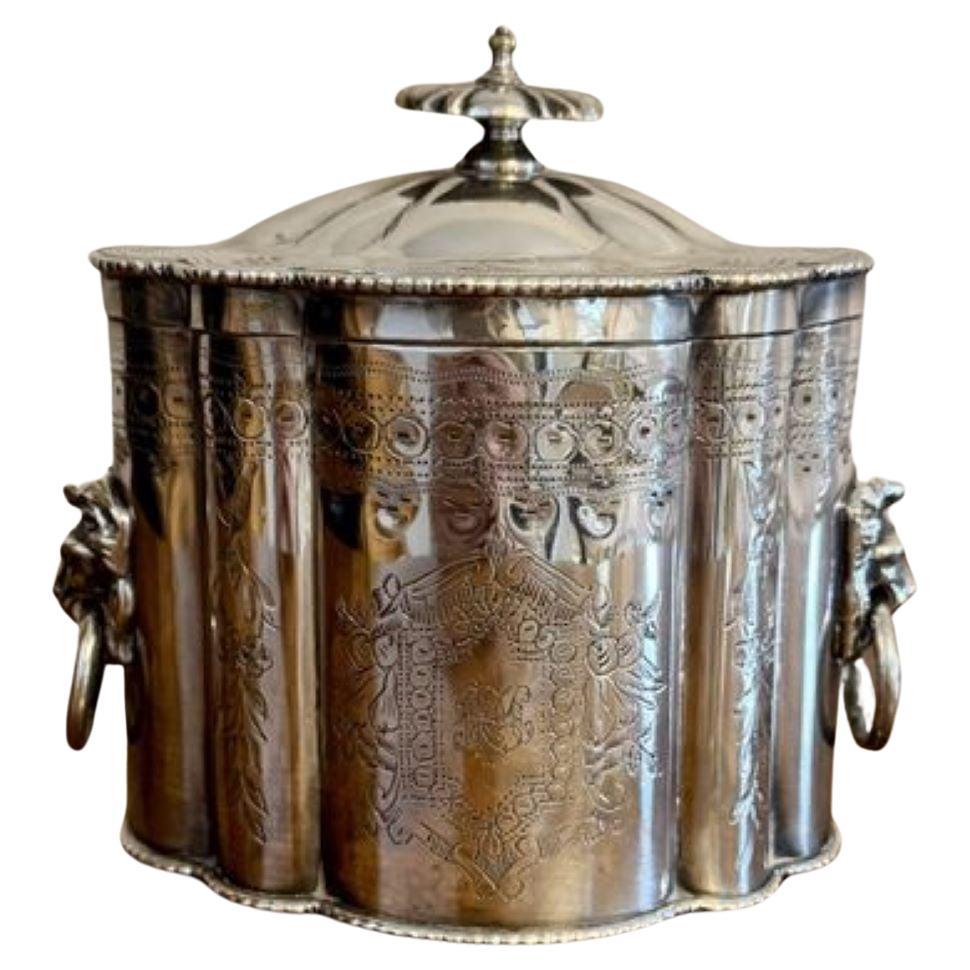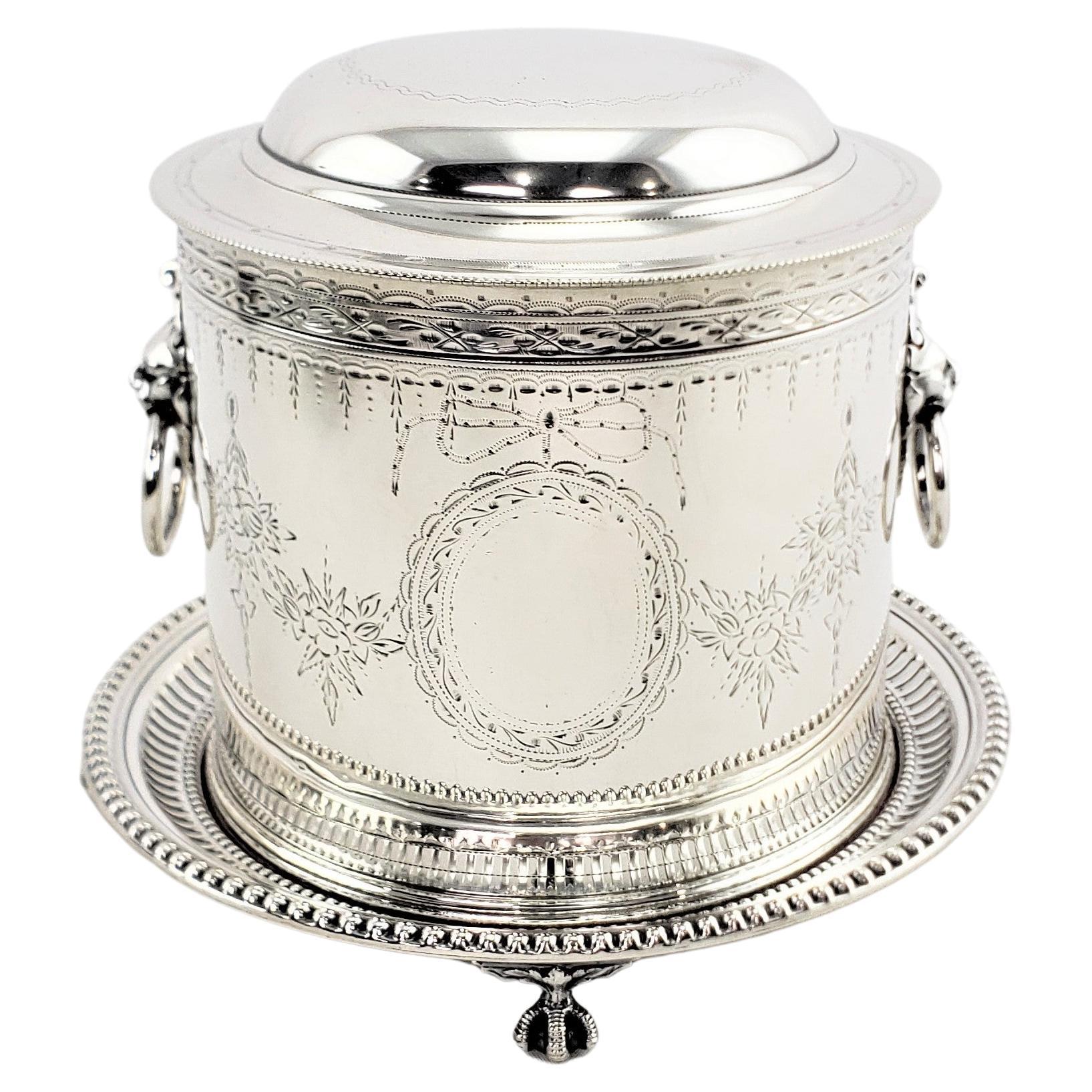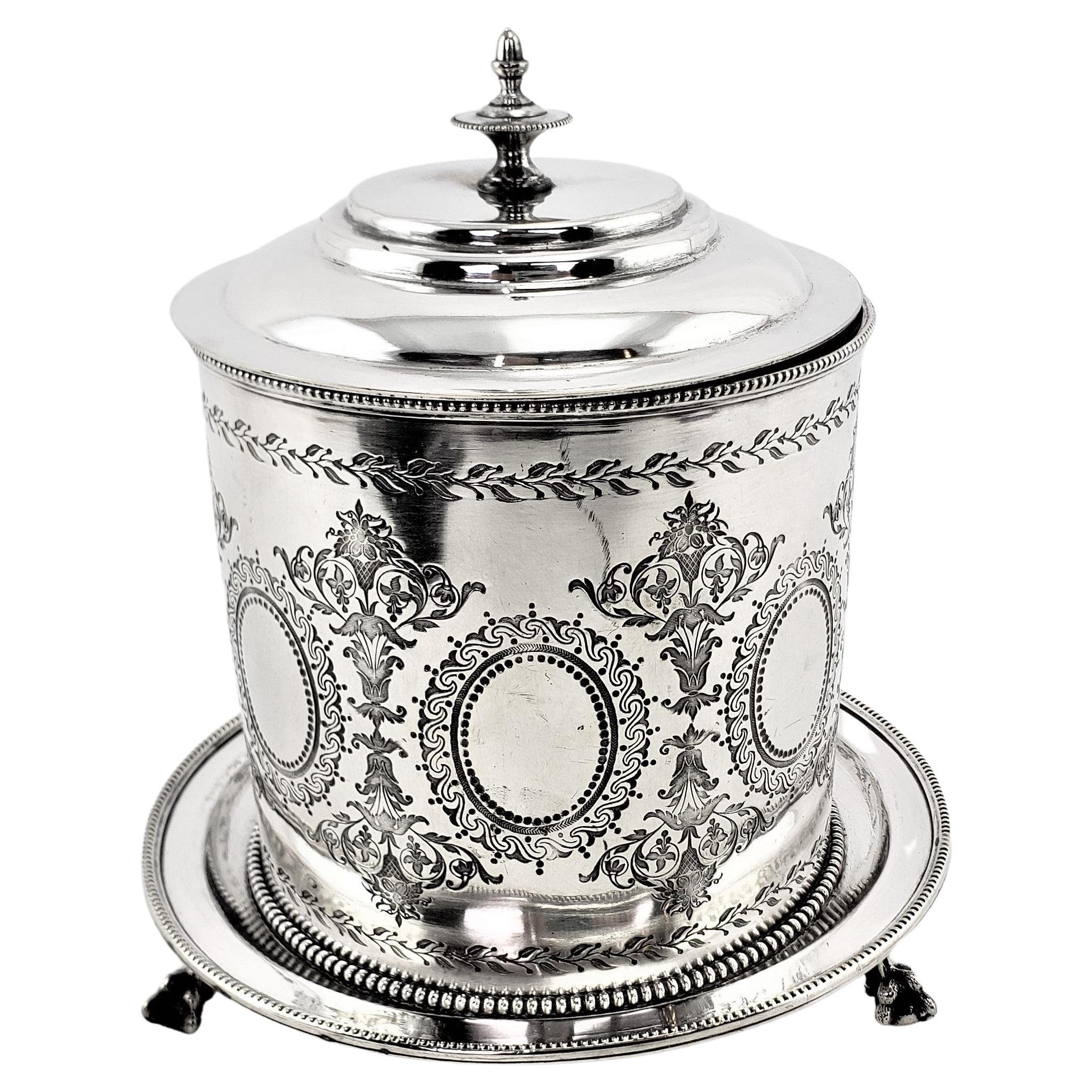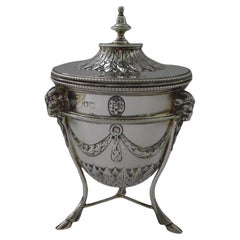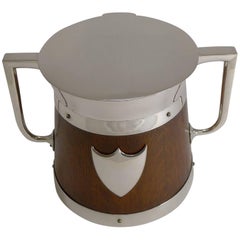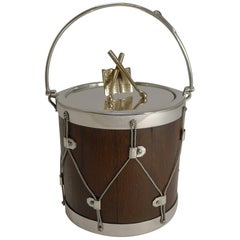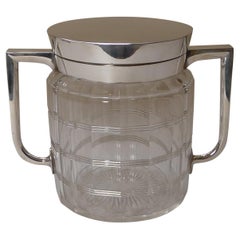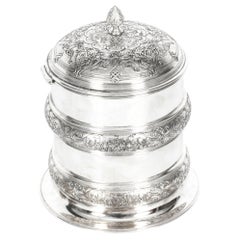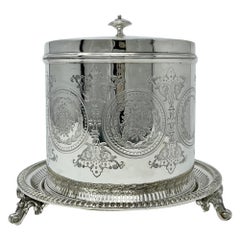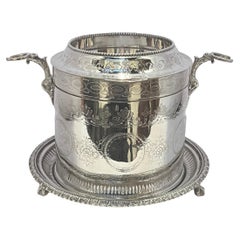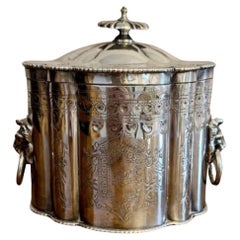Items Similar to Magnificent and Rare Early Silver Plated Drum Biscuit Box on Stand, 1844
Want more images or videos?
Request additional images or videos from the seller
1 of 12
Magnificent and Rare Early Silver Plated Drum Biscuit Box on Stand, 1844
$1,908.92
$2,386.1520% Off
£1,400
£1,75020% Off
€1,624.46
€2,030.5720% Off
CA$2,628.18
CA$3,285.2320% Off
A$2,876.23
A$3,595.2920% Off
CHF 1,519.83
CHF 1,899.7920% Off
MX$34,329.69
MX$42,912.1220% Off
NOK 19,394.98
NOK 24,243.7320% Off
SEK 17,738.29
SEK 22,172.8620% Off
DKK 12,133.85
DKK 15,167.3120% Off
About the Item
I would imagine this was a regimental presentation gift having had this top quality stand custom made in heavy cast silver plate by the finest of silversmith's Elkington and Co. The stand has a very regal armorial crest engraved to the front. The stand is signed by Elkington and being Elkington we are able to date it accurately to 1844.
The drum is most unusual, I have never seen one with this intricate engraved and engine turned decoration to create a military style drum. The two drumsticks to one side is what is used to open the lid.
The drum is signed by the well renowned silversmith, George Richmond Collis; found in an 1849 advertisement "Manufacturers of Gold and Silver Services of Every Descriptions, Platers by the new process of Electro Plate" this makes this piece an early piece of EPGS (Electro - Plated German Silver). The firm exhibited their fine goods in Birmingham (1849) and London (1851 and 1862) Exhibitions.
A rare and magnificent piece in excellent condition. The overall size of the drum on the stand is 9" x 9" x 11 1/2" tall.
- Creator:George Richmond Collis & Co. (Maker)
- Dimensions:Height: 11.5 in (29.21 cm)Diameter: 9 in (22.86 cm)
- Style:Early Victorian (Of the Period)
- Materials and Techniques:
- Place of Origin:
- Period:
- Date of Manufacture:1844
- Condition:Wear consistent with age and use.
- Seller Location:Bath, GB
- Reference Number:Seller: 402061stDibs: LU3365311135031
About the Seller
5.0
Platinum Seller
Premium sellers with a 4.7+ rating and 24-hour response times
Established in 1980
1stDibs seller since 2018
502 sales on 1stDibs
Typical response time: 1 hour
- ShippingRetrieving quote...Shipping from: Bath, United Kingdom
- Return Policy
More From This Seller
View AllTop Quality English Solid Silver Tea Caddy By Goldsmiths and Silversmiths Co.
By Goldsmiths & Silversmiths Co. Ltd.
Located in Bath, GB
A truly exceptional Edwardian tea caddy in Adam style standing on three hoof feet and beautifully decorated with three Ram's heads, swags and Acanthus leaves.
The silver is fully ha...
Category
Antique Early 1900s British Adam Style Sterling Silver
Materials
Sterling Silver
Antique English Oak and Silver Plate Biscuit Box by John Grinsell & Sons
By John Grinsell & Sons
Located in Bath, GB
A handsome and very stylish biscuit box dating to circa 1890 by the top notch silversmith, John Grinsell & Sons of Sheffield.
Made from solid English oak, the box is fitted with e...
Category
Antique Late 19th Century English Late Victorian Decorative Boxes
Materials
Silver Plate
$867 Sale Price
20% Off
Free Shipping
Antique English Oak & Silver Plated Drum Form Biscuit Box or Barrel, circa 1890
Located in Bath, GB
A wonderful Victorian biscuit box or barrel, always highly sought-after in this Drum form, I have probably not had one for three or four years, that's how scarce and hard to come by they are.
The fittings are made from silver plate with the lid topped with a finial in the form of a pair or drum sticks...
Category
Antique Late 19th Century English Late Victorian Decorative Boxes
Materials
Silver Plate
$1,363 Sale Price
20% Off
Free Shipping
Early 20th Century Faceted Glass & Silver Plated Biscuit Box, c.1920
By John Grinsell & Sons
Located in Bath, GB
A heavy piece of glass was used to create this quality example, faceted all the way around and series of simple linear cuts around the circumference; the underside having a star cut....
Category
Vintage 1910s English Art Deco Decorative Boxes
Materials
Silver Plate
$818 Sale Price
20% Off
Free Shipping
Rare Antique English "Elephant and Castle" Biscuit Box c.1890
Located in Bath, GB
An example of a biscuit box that I have never seen before and believe I may never see another.
English in origin, it is silver plated over Britannia Metal with a good finish with mi...
Category
Antique 1890s British Late Victorian Sheffield and Silverplate
Materials
Silver Plate
Quality Antique English Cut Glass & Silver Plate Biscuit Box / Barrel, c.1860
Located in Bath, GB
A particularly good and unusual cut glass biscuit box which would equally make a wonderful ice bucket or pail.
Earlier than most of this type, it dates to around 1860, mid-Victori...
Category
Antique 1860s English Victorian Sheffield and Silverplate
Materials
Silver Plate
You May Also Like
Antique Silver Plate Drum Biscuit Box Elkington & Co, 19th Century
By Elkington & Co.
Located in London, GB
This is an exquisite silver plate biscuit box bearing the makers of the renowned silversmiths Elkington & Co, and bearing the Victorian Lozenge Registration mark that dates it to 185...
Category
Antique 1850s English Victorian Sheffield and Silverplate
Materials
Silver Plate
Antique English Silver Plate Biscuit Box, circa 1880
Located in New Orleans, LA
Antique English SilverPlate Biscuit Box, circa 1880.
Category
Antique Late 19th Century English Sheffield and Silverplate
Materials
Silver Plate
19th Century English Sheffield Silver Plate Ice Bucket / Tantalus
Located in Tarry Town, NY
Step into the opulence of the 19th century with this exquisite 19th Century English Sheffield Silver Plate Ice Bucket, which doubles as a Tantalus. Meticulously crafted, this piece marries form and function in a remarkable display of craftsmanship. The ice bucket's design is not only a testament to the era's sophistication but also a practical solution for keeping beverages chilled. It features a top that accommodates a resting decanter and a side compartment for holding a drinking glass, offering a complete and elegant beverage service...
Category
Antique Mid-19th Century English Victorian Sheffield and Silverplate
Materials
Silver Plate
Fine quality antique Victorian ornate silver plated biscuit barrel by Robert & B
Located in Ipswich, GB
Fine quality antique Victorian ornate silver plated biscuit barrel by Robert & Belk, having a fantastic quality antique Victorian silver plated biscuit barrel with quality ornate det...
Category
Antique Mid-19th Century English Sheffield and Silverplate
Materials
Silver Plate
Antique English Silver Plated Biscuit Barrel with Lion Handles & Claw Feet
Located in Hamilton, Ontario
This silver plated biscuit barrel is hallmarked by an unknown maker, and originates from England and dating to approximately 1910 and done in the period Edwardian style. This biscuit...
Category
Early 20th Century English Edwardian Sheffield and Silverplate
Materials
Silver Plate
Antique English Silver Plated Oval Biscuit Barrel with Elaborate Engraving
Located in Hamilton, Ontario
This antique oval shaped and silver plated biscuit barrel was made in England in approximately 1880 in a period Victorian style. This biscuit barrel has an oval shape with a hinged l...
Category
Antique Late 19th Century English Victorian Sheffield and Silverplate
Materials
Silver Plate
More Ways To Browse
Rare Antique Plates
England Silver Box
Antique Silver Plated Box
Armorial Crest
Box On Stand
Antique Biscuit Box
Antique Biscuit Boxes
Biscuit Plates
Silver Biscuit Box
Silver Drum
Antique Silver Plated Biscuit Box
Victorian Antique Silver Biscuit Box
Antique Furniture Richmond
Military Drum
19th Brass Box
Enamelled Silver Boxes
Antique Metal Boxes
Leather Decorative Boxes
